Have you ever looked at a car and saw a strange or funny face staring back at you? Maybe it looked like it was smiling, or like it was just really disappointed for some reason. This is the phenomenon known as “pareidolia” (par·ei·do·lia), and originates from the Greek combination of “‘para’ (para = beside or beyond) and ‘eidos’ (images, appearance, looks)”. (NIH) It is defined as, “the tendency for perception to impose a meaningful interpretation on a nebulous stimulus, usually visual, so that one sees an object, pattern, or meaning where there is none.” (Wikipedia) The term was coined by psychiatrist Klaus Conrad in his 1958 publication about the beginning stages of schizophrenia. He similarly defined it as the “unmotivated seeing of connections [accompanied by] a specific feeling of abnormal meaningfulness.” (Conrad) Whenever you recognize a face somewhere it shouldn’t be, you are experiencing a perfectly natural response to the world around you. And in fact, this human experience can be anywhere, and has some very interesting biases accompanying it.
“Your brain is superattuned to see faces everywhere,” says Susan Wardle, a neuroscientist who studies pareidolia (Wollan) and a name you will see often throughout this blog. Take a smiley face for example, it consists of usually only a couple lines as the eyes and a curved one as the mouth, and yet is widely recognized as the symbol for a happy face. “You only need this minimal information to see a face because it’s more adaptive to make a mistake and see a funny face in a cloud than to miss a real human face,” Wardle explains. Just like the smiley face, the same logic applies to cars, with the headlights (the eyes) and the grill (the mouth), a face is formed. As a car enthusiast as well, I strongly believe the “face” of the car is what makes so many car designs instantly recognizable. While cars are not the main focus of this post, I think they are a good jumping off point for those unfamiliar to pareidolia as they simply and effectively illustrate this common occurrence.
Let’s take a look at some car “faces” now.
- A very happy Austin-Healey Sprite (Photo: Raphaël Labbé/Flickr/CC BY-SA 2.0)
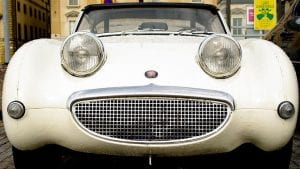
- A tough looking Dodge Charger (Photo: Dodge/Chrysler)

- A very suspicious vampire in the rear of a 1950s Chevrolet Impala (Photo: r/Pareidolia)

- A smiling, shy Mazda Miata (Photo: Cars and Bids via Motorbiscuit.com)
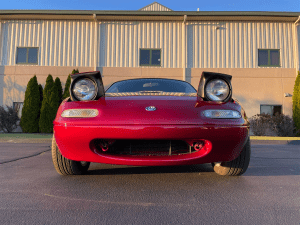
- And a very happy Mazda3 (Photo: Ulrich via NYT)

Do you see the faces? It may be a little tricky at first, but even those unfamiliar with pareidolia can come to see what I mean when I say “cars have faces” if you look at it enough or in the right way. In David Robson’s BBC article on pareidolia, he quotes geometric morphometrics expert (learn more about what that is here) Sonja Windhager’s study about this phenomenon. Windhager found that, “[while she was traveling countries] questioning people on the roadside and in small restaurants [about whether they saw faces in the pictures she presented them], she was initially met with surprise. ‘They thought we were a little crazy,’ she says. But even though the Ethiopians had not been exposed to films like Disney’s Cars or The Adventures of Herbie, they soon understood the purpose of the study, and rated the pictures in much the way that Europeans do. For instance, cars with a big windscreen, round headlights and a small grill tend to be considered young and feminine …while those with flatter headlights and a bigger, squarer under-body are older and more masculine.” (Robson)
What’s more, this is further affirmed by the fact that people tend to buy cars with more “aggressive” faces. At least that’s true according to this slightly outdated article from 2008 by Live Science’s Jeremy Hsu, but I believe that still holds to the modern day. In fact, I think cars have only become more aggressive in styling, which reflects the evolution of general consumer interests clearly when comparing the current looks of many modern cars to their predecessors. My point is to say that not only do we consciously or subconsciously see these faces, but we can find ourselves more drawn to certain ones than others. I think new cars tend to radiate more masculinity with their “aggressive” looks than they have historically due to natural cultural shifts in what we perceive modernity looks like. To visualize this change, let’s take a look at the 2003 Honda Accord vs. the 2023 Honda Accord. Same make and model, just 20 years later. I think the 2003 version of the accord is more cutesy, and feminine than the 2023 – which tends to be the trend in many cars from the 2000s to early 2010s. Do you agree? Which of these two cars looks more feminine or masculine to you?
2003 Honda Accord (Photo: hondanews.com) vs 2023 Honda Accord (Photo: Marc Urbano, Car & Driver)
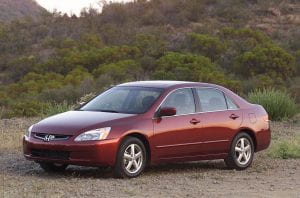
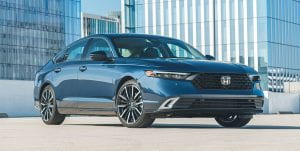
According to Robson, the 2003 version of the Accord is the more feminine car due to its small grill, and larger headlights. No matter how you answered though, gender bias actually seems to be ingrained in pareidolia, with people most often assigning cars and objects that are more “plain” or “aggressive” in design as male. In Forbes’ “Illusions Of Faces In Inanimate Objects Are Often Male” article by Eva Amsen, Amsen provides that, “It’s an interesting cognitive bias, and it’s part of a much larger phenomenon. In all of the most simple depictions of faces, the female version is usually shown as having something extra, like long hair, eyelashes, or lipstick. By extension, the basic face without those added features is considered ‘male’.” (Amsen) Looking back at the first set of car images, which cars did you count as masculine and feminine? Pareidolia and its gender bias extends to other things as well. It’s possible to see faces in anything! Take a look at a few more examples below. Here’s a strange bunch of faces in common, daily objects. Which ones do you count as male or female?
- From left to right, top to bottom: A small appliance making a “ :o| ” face; angry and neutral wall outlets; a happy mug of coffee; a perplexed, dazed, or even hungry looking faucet; a “ : | ” face on a mailbox; and a silly-faced washing machine (Photo: Wardle, et al.)
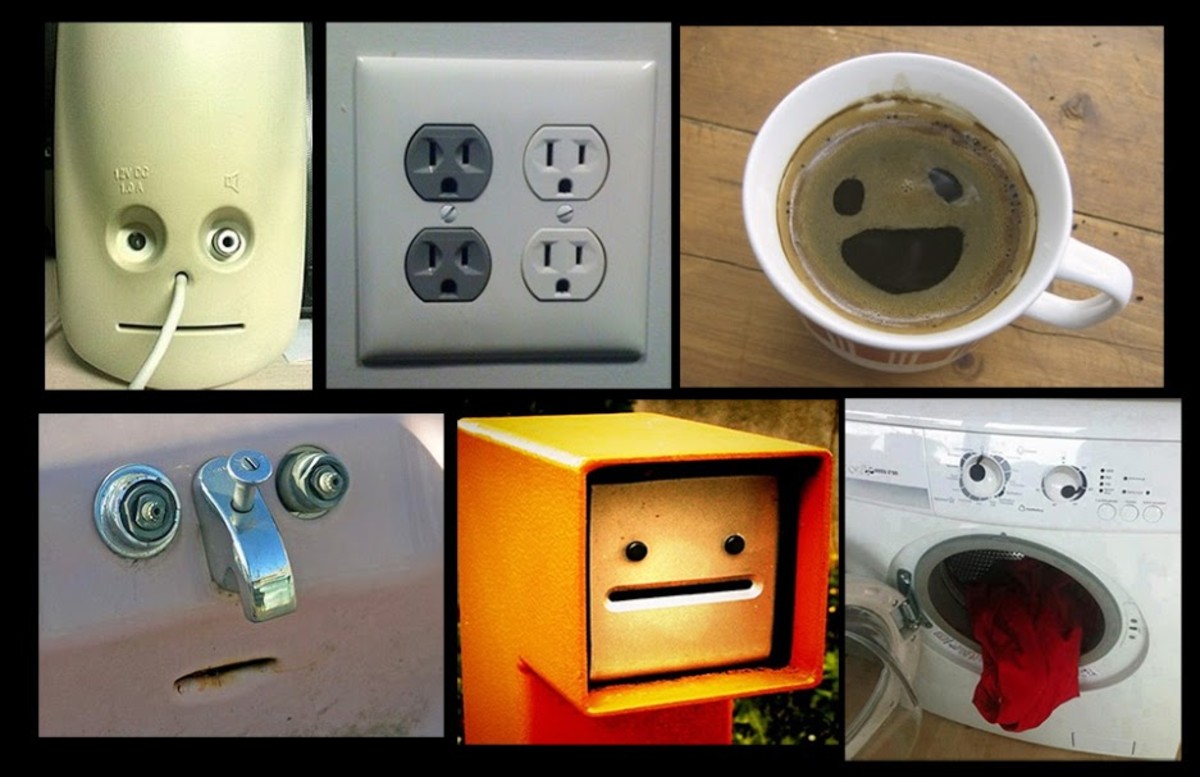
- A burger that somehow resembles Steve Harvey? (Photo: Twitter/@KNTYfemme)

- A happy wall outlet (Bill Ebbesen via Wikipedia)

- A frightening (or frightened) tree trunk (Betty Rose Nagle, Ph.D. via PsychologyToday)

How about on campus? Are there faces here too? Yes! Take a look at a few of my own examples I’ve taken from campus… Do you see them? Do these faces have a gender bias as well? They may be a little bit trickier to see this time around.
- A window with a sideways robot face
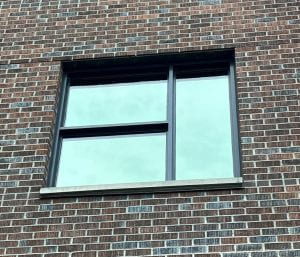
- Trash cans with very pronounced cheek and brow bones

- Our library book drop has a ” : | ” face on its slot

- A tree that looks like an angry anglerfish

- A penguin face in a space heater

Maybe these faces aren’t immediately apparent. I tend to see faces like these quite often so I’ve become a bit of a natural at it. Well, as natural as anyone can be when our brains are already programmed to make faces out of random things. Some websites claim that being prone to pareidolia may indicate you’re on the more creative side… Maybe that’s true, maybe it isn’t. On a personal note, I actually enjoy seeing these faces. Sometimes it brightens up my day to see a little happy face in my dishes, or be face to face with one on the front of a house – but I digress.
Continuing on, Susan Wardle in collaboration with other researchers, created a thorough study on gender bias in “illusory faces.” Below I’ve included the graphics that Wardle and her team created to compile their data and findings. Do you agree with the gender biases in these examples? What about the emotions that they are supposedly expressing, are these true as well?
(Photo: Wardle, et al)
Here’s more interesting data sets from Wardle, et al below. Take your time looking at these graphs. Once again, they confirm that objects with faces are overwhelmingly projected as male. But going into the social and cultural implications of that would be an entirely different can of worms. For now, let’s leave it at that. If you want to read Wardle’s study, I’ve linked it here. Now you know what pareidolia is and about its implicit gender bias, how exciting! Next time you see a face in your food or in your car, you’ll know that this is just your brain doing what it naturally means and wants to do.

(Photo: Wardle, et al)